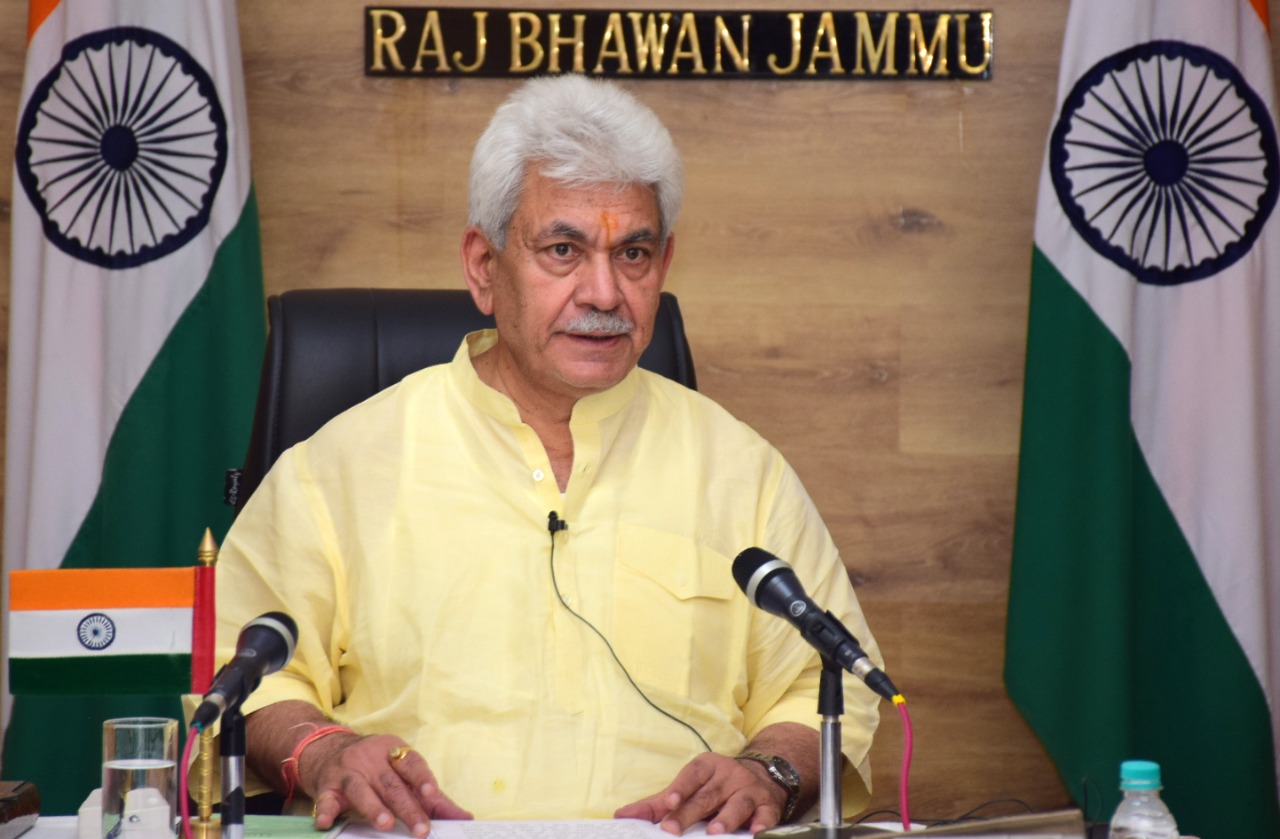48 artisans of 12 families engaged in work
Sinha says villages will get new identity
Sanjeev Pargal
JAMMU, Sept 18: Sanglipora and Lachmanpora villages in Budgam district of Kashmir valley have suddenly shot into limelight as 48 artisans of 12 families are weaving 12 carpets which will be laid in new Parliament House which is being built under Prime Minister Narendra Modi Government’s ambitious Central Vista Development Project.
Lieutenant Governor Manoj Sinha today also made a mention of two villages in his Awaam Ki Awaaz monthly Radio Address saying the villages will get new identity and women will also become economically independent.
Officials said 48 artisans from 12 families are working on the historic project as carpets woven by them will be laid in the Parliament. The families and artisans hailed from Sanglipora and Lachmanpora villages of Budgam district.
Abdul Rahim, who is weaving carpets for the Parliament, was quoted as saying that it is a proud moment for him as well as his village while Sharifa Bano, who is also affiliated with the project said the villages will get new identity after carpets woven by them will be adorned in the Parliament.
To promote Jammu and Kashmir carpets, the administration has introduced GI certification, testing, labeling and training. QR code has also been launched,” the officials said.
“Weavers from Budgam are our pride. The traditional hand-made carpets from Budgam are all set to adorn the new building of the Parliament. It’s a historic opportunity and fitting tribute to J&K’s craftsmanship,” the Lieutenant Governor said.
The artisans are working for the last about a year to complete the project which was assigned to them by a New Delhi-based company.
The Government has maintained that the Winter Session of Parliament will be held in the new building.
A company had received the order for 12 carpets in October last year for carpets for the new Parliament building after they submitted the samples.
The carpets to adorn the new Parliament building will be 11 feet long and up to 8 feet wide.
“They will be laid in a circular formation. The width of each carpet is not the same. It varies, it starts with less width and goes on to become bigger. But the minimum is four feet,” the officials said.
The carpets are unique and the three designs have been incorporated from the traditional Kashmiri ‘Kani’ shawl designs.
“Fifty weavers are working on the project and 12 families are associated with it right from supplying raw material, designing, weaving etc,” they said.
They added that over 90 per cent of the project work has been completed and the rest will take only few days.
The designing of the carpets took about three months and then the actual work started.
The process of Kashmiri carpet making is an arduous one. There are many phases- beginning with acquiring and preparing the raw materials, then treating and dyeing them, and finishing with weaving and adding the finishing touches.
Kashmiri weavers are now hoping to receive more orders, which will eventually boost the traditional art.
Kashmiri artisans and carpet merchants are eager for these carpets to be placed at India’s highest Constitutional building so that people across the world would appreciate the skill of Kashmiri handicraft workers.
A weaver, while appreciating the employment generated by the project, expressed hope that the weavers will get more work and their due after the project is completed.
The origin of hand-knotted carpets locally known as “Kal baffi” dates back to the 15th century after which it progressively attained a high degree of perfection. It is said that Sultan Zain-ul-Abidin brought carpet weavers from Persia and Central Asia to Kashmir to train local inhabitants.


